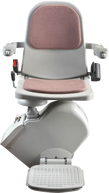For the safety of the individual using the wheelchair, and the caregiver, it is important to know how to use a wheelchair safely. Wheelchairs are especially useful devices, however they can also be dangerous if they are used incorrectly, or if the wheelchair user fails to follow the manufacturer’s instructions.
The following guidelines will give you some tips on how to use a wheelchair safely.
1. Read the Manufacturer’s Instructions
All wheelchairs are different, so it is always a good idea to read the manufacturer’s instructions before using a specific wheelchair for the first time. The manual will show you how to safely handle your wheelchair, how to set it up correctly, how to move around in it safely, and how to fold and unfold it correctly (if applicable). Your manual should also contain warnings and guidelines which illustrate what you should do and what you should never do when using your wheelchair. This can include things like how to avoid tipping your wheelchair, how to navigate slopes and ramps effectively, and how to safely get in and out of your chair.
2. Centre of Gravity
Many tasks may require a wheelchair user to bend, reach or lean in order to grab hold of an object. Each of these movements will cause the centre of gravity to change. Due to this, it is wise to use the casters in order to remain stable and keep your balance. When you first get your wheelchair, it is a good idea to see how far you are able to lean or reach whilst seated. If you do this with supervision, you will be able to see where your safety limits are.
3. Transferring Into and Out of a Wheelchair
Transferring from a wheelchair should be done carefully to prevent falls and ensure the safety of the user. Since each individual is unique different levels of assistance may be required, depending on physical limitations. A healthcare professional or occupational therapist should be able to give you some tips on how to transfer into and out of your wheelchair safely. Things that every wheelchair user should do, no matter what their level of mobility, include making sure the brakes are fully engaged and locked when standing up or sitting down, making sure the footrests are raised out of the way, and using the wheelchair for stability until you are in a standing or sitting position. If assistance is required, this should be given on the weakest side of the body.
4. Know Your Own Capabilities
Using a wheelchair will require you to navigate ramps and slopes at some points. It is important that you are aware of your capabilities in terms of endurance and strength, before you attempt a sloped surface. Make sure to inspect the ramp or curve before proceeding, and look out for any holes, slippery or uneven surfaces, or hazards. If you are unable to see clearly, you can ask someone to do this for you. Like with your centre of gravity, it is wise to attempt sloped surfaces with supervision until you are confident in your ability to tackle them safely.
5. Transportation
Almost all buses and trains have specific areas for wheelchair users, and wheelchair users are given priority over able bodied citizens. If you are using your wheelchair on public transport, make sure that you use the dedicated wheelchair space, and any restraints that are provided for your use. If your wheelchair has been approved for transportation in a private vehicle, it is important to make sure that you use a wheelchair tie-down and restraint system, and follow any additional instructions provided by the manufacturer.
6. Weather
When the weather is particularly bad outside, it is advised not to venture out unless you have to. Icy conditions in particular, can be treacherous for wheelchair users, as wheelchairs tend to slide to the lowest point and have very little grip on such surfaces. It is possible to buy special pneumatic tyres, which have better levels of traction on wet and slippery surfaces. When out in bad weather, wrap a warm blanket around your legs to maintain your body heat, and consider wearing gloves with a grip, which will keep your hands warm and preventing your hands from slipping. Finally, wipe down any metal surfaces on your wheelchair upon returning home to prevent against the risk of rust.
7. Maintenance
Poor maintenance, or a lack of maintenance entirely, can lead to the failure of components. This can lead to the wheelchair turning incorrectly, the brakes not working properly, or the user tipping from the chair. The manufacturer’s instructions should guide you through the maintenance that is required. It is advisable to use a qualified technician to service your wheelchair periodically.
Further information about wheelchair safety can be obtained from your GP or health visitor. Please remember to read the manufacturer’s instructions thoroughly before usage to ensure that you know how to remain safe. By doing this, and following the tips above, you should find that you have no issues.


